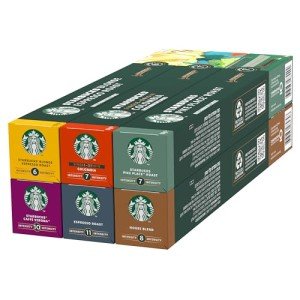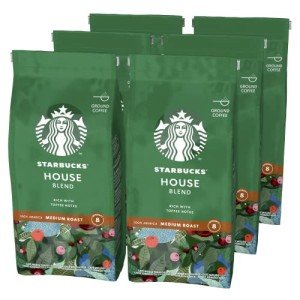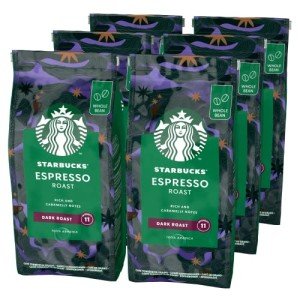Starbucks Coffee has become synonymous with high-quality coffee and a unique customer experience. Since its inception in 1971 in Seattle, Washington, Starbucks has grown from a single store offering premium coffee beans to a global coffeehouse chain, with thousands of locations across continents. This blog post aims to explore the history, menu offerings, and impact that Starbucks Coffee has had on coffee culture worldwide.
A Brief History of Starbucks
The journey of Starbucks began with three founders: Jerry Baldwin, Zev Siegl, and Gordon Bowker. They opened the original Starbucks store in Seattle’s Pike Place Market, initially selling high-quality coffee beans and equipment. In 1982, Howard Schultz joined the company as the Director of Retail Operations and Marketing. His trip to Italy exposed him to the vibrant coffee culture there, which inspired him to shift the focus of Starbucks to the café format, offering espresso-based drinks.
Timeline of Key Events
| Year |
Event |
| 1971 |
Starbucks was founded in Seattle, WA. |
| 1982 |
Howard Schultz joined Starbucks. |
| 1984 |
The first espresso bar opened in Seattle. |
| 1992 |
Starbucks went public, with shares listed. |
| 2018 |
Starbucks launched its first Reserve Roastery. |
Starbucks Coffee Menu
One of the reasons Starbucks has gained immense popularity is its wide-ranging menu. Here, customers can find a variety of beverages, snacks, and meals, catering to different tastes and dietary preferences. Below is a categorized breakdown of some of the iconic offerings on the menu.
Coffee Beverages
| Coffee Type |
Description |
| Espresso |
A concentrated coffee brewed by forcing hot water through finely-ground coffee. |
| Americano |
Espresso with hot water for a lighter flavor. |
| Latte |
Espresso mixed with steamed milk and a small amount of milk foam. |
| Cappuccino |
Espresso with steamed milk and a thicker layer of frothed milk. |
| Cold Brew |
Coffee brewed slowly in cold water for a smoother taste. |
Non-Coffee Beverages
| Beverage Type |
Description |
| Chai Tea Latte |
A blend of black tea, milk, and spices. |
| Matcha Latte |
A smooth blend of matcha green tea and milk. |
| Hot Chocolate |
Rich cocoa blended with steamed milk. |
| Refreshers |
A series of cold, fruity drinks made from real fruit juice. |
Food Options
| Food Category |
Description |
| Pastries |
Includes croissants, muffins, and scones. |
| Sandwiches |
Variety of breakfast and lunch options. |
| Salads |
Fresh salads made with seasonal ingredients. |
| Snacks |
Includes protein boxes and bakery items. |
The Starbucks Experience
What sets Starbucks apart from other coffee retailers is not just its products but its brand experience. The ambiance of Starbucks stores promotes a social atmosphere where individuals can relax, work, or meet friends. This intentional focus on creating a “Third Place”—a space between home and work—has contributed significantly to Starbucks's success.
Key Elements of the Starbucks Experience
- Customer-Centric Approach: Personalized service with baristas who often know regular customers by name.
- Store Design: Each Starbucks outlet has a unique design tailored to fit its local environment and community.
- Quality Products: Continuous focus on sourcing high-quality coffee beans and innovative beverage offerings.
- Digital Integration: Innovative use of technology, including mobile ordering and payments through the Starbucks app.
Environmental Responsibility
As Starbucks continues to expand globally, it has recognized its role in sustainability. The company has made commitments to ethically source coffee, reduce waste, and minimize its carbon footprint.
Ways Starbucks Promotes Sustainability
| Initiative |
Description |
| Ethical Sourcing |
Commitment to sourcing 100% of coffee ethically. |
| Green Stores |
Investment in energy-efficient stores and reducing water usage. |
| Recycling Programs |
Encouragement for customers to use reusable cups. |
| Community Initiatives |
Investments in local coffee farming communities to promote sustainability. |
Frequently Asked Questions (FAQ)
1. How does Starbucks source its coffee?
Starbucks partners with organizations like Conservation International to help ethically source its coffee. The company prioritizes direct relationships with farmers to ensure the highest quality and sustainability.
2. What makes Starbucks’ menu unique?
Starbucks has an extensive, ever-evolving menu that includes seasonal specialties and local flavors, alongside classic offerings. The company regularly innovates to keep the menu fresh and engaging for its customers.
3. Does Starbucks offer vegan options?
Yes, Starbucks has a range of vegan-friendly options, including non-dairy milk alternatives, food items like oatmeal and various baked goods, and several beverages that can be customized to be vegan.
4. Can I get a Starbucks drink without caffeine?
Absolutely! Starbucks offers a variety of decaffeinated drinks, herbal teas, and even refreshing items like fruit juice and smoothies for those avoiding caffeine.
5. What are Starbucks Reserve Roasteries?
Starbucks Reserve Roasteries are upscale locations that offer small-batch, rare coffees and a premium coffee experience. They often include unique brewing methods and exclusive food pairings.
Starbucks Coffee has succeeded in creating a unique coffee culture that resonates with people across different demographics. From its meticulously sourced coffee to its inviting store environments, the Starbucks experience goes far beyond just ordering a cup of coffee. With a focus on sustainability, innovation, and customer satisfaction, Starbucks continues to redefine what it means to enjoy a cup of coffee in contemporary society. As coffee lovers explore what Starbucks has to offer, they become part of an expansive community dedicated to quality, connection, and care.




